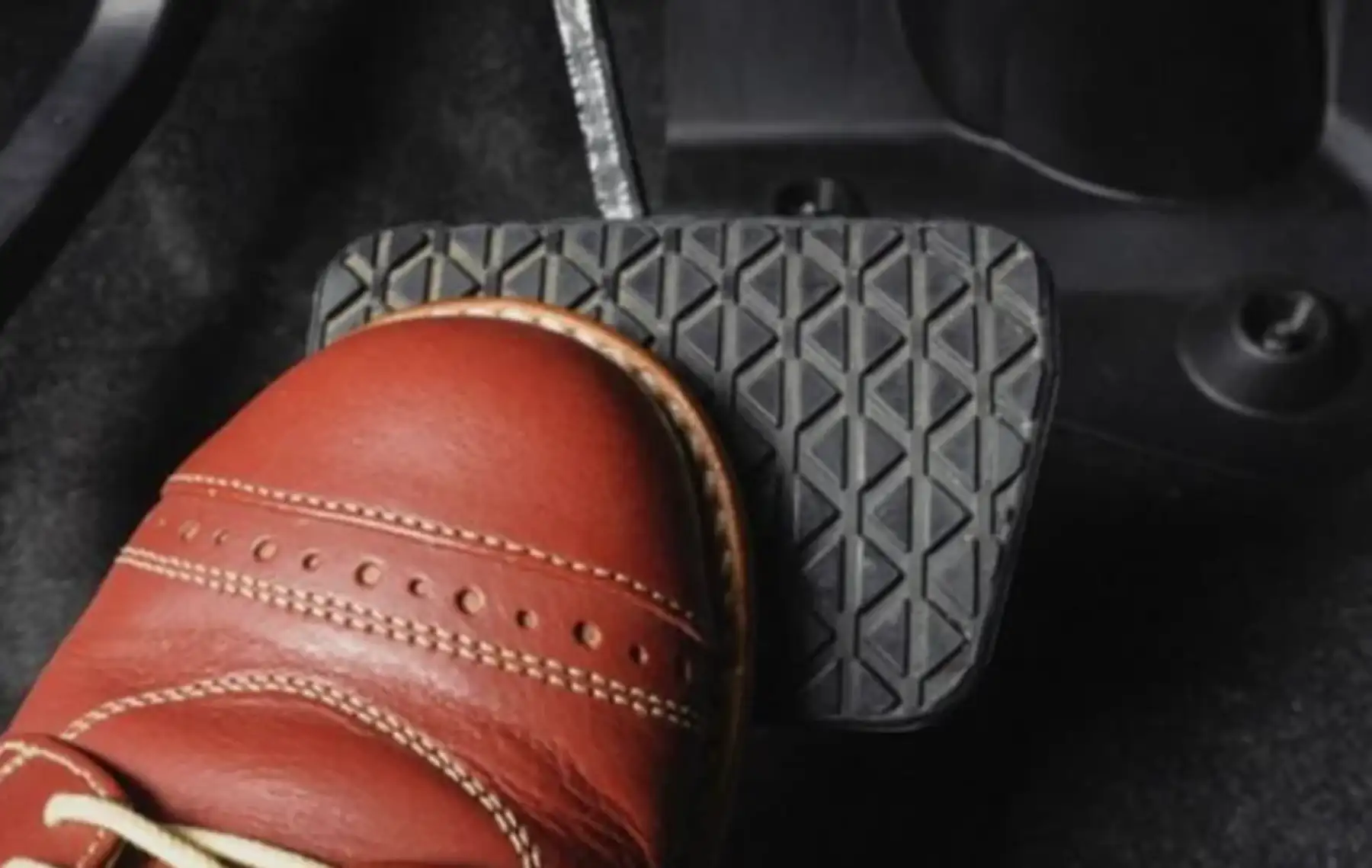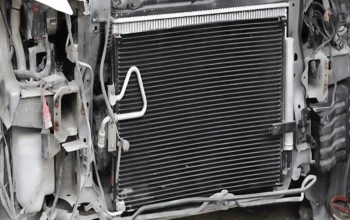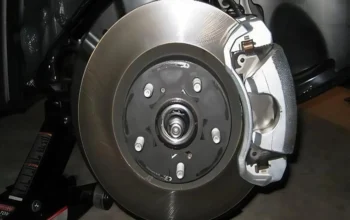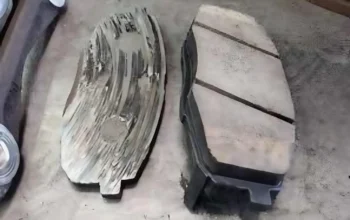Ever pressed your brake pedal and it just wouldn’t come back up? A stuck brake pedal can be both scary and dangerous, especially if it happens when you least expect it. Whether your brake pedal is jammed, not returning, or just feels “off,” don’t worry, we’re going to walk through how to fix a stuck brake pedal step by step.
In this guide, you’ll learn what could cause your brake pedal to get stuck, how to diagnose the problem, and how to fix it. We’ll keep it simple, using everyday language, no advanced mechanical jargon. So, let’s dive into how to fix a stuck brake pedal quickly and safely.
Table of Contents:
- What Causes a Stuck Brake Pedal?
- How to Fix a Stuck Brake Pedal
- 1. Check the Brake Fluid Level
- 2. Inspect the Brake Lines and Bleed the System
- 3. Examine the Master Cylinder
- 4. Look at the Brake Pads and Calipers
- 5. Pump the Brake Pedal Gently
- 6. Try Taking Your Foot Off the Brake
- 7. Rock the Vehicle Back and Forth
- 8. Manually Pull Brake Cables
- 9. Set and Release the Parking Brake Several Times
- 10. Inspect the Brake Booster
- 11. Check the Pedal Linkage and Return Spring
- When to Call a Mechanic
- Preventing a Stuck Brake Pedal in the Future
- Final Thoughts
What Causes a Stuck Brake Pedal?
Before you can fix the issue, it helps to understand what’s going wrong under the hood, or under the dash. A stuck brake pedal usually happens when something interrupts the normal return motion of the pedal. Here are a few common causes:
- Faulty brake booster
- Worn-out return spring
- Contaminated or low brake fluid
- Air in the brake lines
- Overheated brake components
- Sticking calipers or worn brake pads
- A binding pedal linkage
- Failed master cylinder
- Issues with power assist (electric or hydraulic)
How to Fix a Stuck Brake Pedal
Now that you know what might be wrong, let’s walk through the steps to get your brake pedal working again.
1. Check the Brake Fluid Level

Make sure your brake fluid reservoir is filled to the recommended level. Low brake fluid can affect pressure and cause the pedal to stick. If it’s low, top it up using the correct type for your vehicle (usually DOT 3, 4, or 5.1).
2. Inspect the Brake Lines and Bleed the System
Air trapped in the brake lines can make the pedal feel soft or prevent it from returning. Bleed the brake lines to remove any air bubbles. It’s a simple process using a brake bleeder kit, or you can ask a friend to help pump the brake pedal while you open and close the bleed valves.
3. Examine the Master Cylinder
The master cylinder is the heart of your braking system. If it’s leaking or faulty, your brake pedal might stay down. Look for signs of leakage around the cylinder or a spongey pedal feel.
4. Look at the Brake Pads and Calipers

Worn brake pads or damaged calipers can prevent smooth brake release. Inspect the pads for uneven wear or thinning. Calipers should move freely, if they seem stuck, they may need cleaning, lubrication, or replacement.
5. Pump the Brake Pedal Gently
Sometimes, gently pumping the brake pedal can help release it. This can work especially well if the problem is temporary, like a bit of moisture or air in the system.
6. Try Taking Your Foot Off the Brake
It sounds simple, but taking your foot off the brake and letting the car rest can give your system a chance to adjust. In some cases, this gives your wheels just enough movement to free the pedal.
7. Rock the Vehicle Back and Forth
If the car is on a safe, flat surface, try gently rocking it forward and backward in neutral. This can sometimes relieve tension in the braking system, especially in cold weather or after sitting too long.
8. Manually Pull Brake Cables
If it’s safe and you’re comfortable crawling under the car, you can locate the brake cables and gently tug them to release tension. Be cautious and ensure the car is securely parked with the wheels blocked.
9. Set and Release the Parking Brake Several Times
Sometimes, the parking brake mechanism gets stuck and affects the regular brake pedal. Try setting and releasing the parking brake a few times to see if it helps loosen things up.
10. Inspect the Brake Booster
A faulty brake booster can make it hard for the pedal to return. It could be a vacuum issue or damage inside the booster itself. If you hear a hissing sound or the pedal feels very hard, this might be your problem.
11. Check the Pedal Linkage and Return Spring
If everything else seems okay, the problem might be under the dashboard. The pedal mechanism itself could be binding or the return spring might be broken or weak. Inspect the spring and moving parts and apply some lubricant if needed.
When to Call a Mechanic
If you’ve tried the steps above and your brake pedal is still stuck, it’s time to call a pro. Brake problems can escalate quickly and compromise your safety. A certified mechanic can run a deeper inspection of the brake booster, ABS system, or electronic modules that may be failing.
Preventing a Stuck Brake Pedal in the Future
Here are a few tips to keep your brake system healthy:
1. Check Your Brake Fluid Regularly
Make it a habit to check the brake fluid every few months and top it off as needed.
2. Get Brake Inspections During Oil Changes
Ask your mechanic to check your pads, calipers, and fluid condition during your routine oil changes.
3. Keep Components Lubricated
Proper lubrication of pedal linkages and moving parts helps reduce wear and prevent sticking.
4. Don’t Ignore Small Signs
A squeaky brake, slow return pedal, or soft brake feel should never be ignored. These are early warnings of bigger problems.
Final Thoughts
A stuck brake pedal isn’t just a nuisance, it’s a red flag. But most of the time, you can fix a stuck brake pedal with a few simple checks. Whether it’s topping off brake fluid, bleeding the lines, or checking for a damaged return spring, the solution might be simpler than you think.
If you’re not sure or if the pedal still won’t budge after these steps, don’t hesitate to bring your vehicle in for professional help. Your safety comes first, and reliable brakes are non-negotiable.






